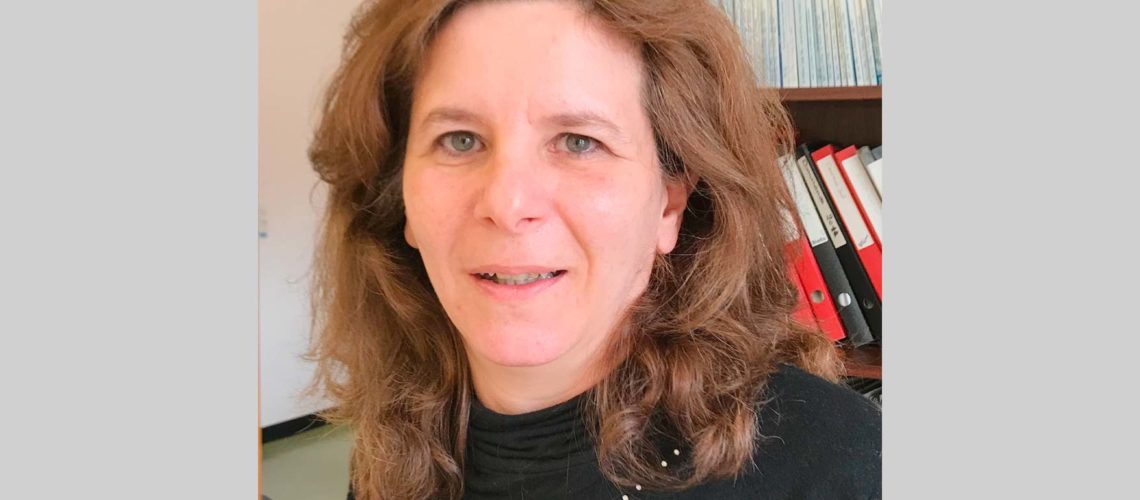Nathalie Ginovart – Translational Research Using Neuroimaging
8 September 2019

Nathalie Ginovart uses neuroimaging as a research tool to investigate mental disorders and as a way of bringing the clinical and fundamental worlds closer together.
Nathalie Ginovart started by studying biology before continuing with a master’s in pharmacology followed by a M.Phil. in integrated biological systems – which is when her interest in the brain began to deepen. “I was exposed to studies on epilepsy, depression and schizophrenia. I soon wanted to do neuroscience so I could have a better understanding of the brain mechanisms involved. The brain seemed to me to be like a black box that wasn’t very accessible.” A thorough training combined with a passion for the brain meant that Nathalie decided to undertake a doctorate in neuroscience at the University of Lyon in France.
Clinic-based biologist
Even as a young doctoral student, Nathalie was aware of the difficulties involved in translational research. “There were problems in dialoguing with each other: most basic researchers don’t understand the challenges of clinical research and most clinicians don’t have the time, training and resources to venture into basic research.” Ginovart adds that she has always been interested in neuropsychiatric research because it can be used to apply basic research concretely. And that’s why Nathalie decided, as part of her post-doctoral internship, to do a clinical neuroscience training at the Karolinska Institute in Sweden where she was trained in clinical positron emission tomography (PET) imaging.
She was later called back to the place where she had done her doctorate, Lyon CNRS, to “bridge the gap between clinical and fundamental work,” as she puts it. She then applied to the Center for Addiction and Mental Health at the University of Toronto, which was looking for her kind of profile, so she could act once more as the interface between the two worlds. She stayed in Toronto for five years as an assistant professor before joining the Department of Psychiatry in UNIGE’s Faculty of Medicine. Based at HUG’s Belle-Idée psychiatric hospital, she was surrounded by clinicians and worked on developing animal models to complement the clinical areas. “We have a multidisciplinary approach and conduct operant behavioral testing, PET imaging and chemogenetics in animal models. Clinical studies in humans are carried out in parallel, and PET imaging provides the translational bridge between the animals and human studies”.
Using a translational approach to help understand addiction
In particular, her research goal is to gain a better understanding of the factors that predispose individuals to addictive behaviors and to identify their neurochemical mechanisms and the neuronal circuits involved. Impulsivity, risky decision-taking and the search for novelty are prominent characteristics of addicted individuals. “For instance,” says Nathalie, “although deficits in dopaminergic receptors are correlated with high levels of impulsivity, we don’t know whether these factors pre-exist drug abuse or if they’re abnormalities that arise from repeated drug exposure.” As a result, Ginovart is carrying out research on a rat strain (RHA / RLA) used as an addiction vulnerability model to determine these factors with the help of observations made in humans.
Ginovart and her team are also looking at clinically relevant issues, such as research into environmental factors that may reveal pathological behaviors later in adulthood. She is studying early environmental effects: “Addicts tend to have lived in a poor social environment, suffered abuse or experienced negligent parenting behavior when they were young. And that’s thought to increase vulnerability to addiction.” Thanks to tight collaborations with psychiatrists from the Department, clinical studies are also underway in patients with cannabis use disorder and in young people suffering from internet gaming disorder because, as Ginovart points out: “We aim to extract the predisposing factors and potential brain abnormalities common to these two types of addiction and dissociate them from those linked to drug-taking.”
Gaining access to the network
Nathalie’s research group got co-affiliated to the Department of Basic Neuroscience and moved to the UNIGE’s University Medical Center in 2019, with the promise of having closer and easier access to the neuroscience network in Geneva. “I’m really delighted as this gives me and my students new opportunities for closely interacting with neuroscientists through events such as seminars, meetings and lunch events.” Furthermore, Nathalie is also delighted with her closer relationship with Synapsy since it will give her more visibility in the Lemanic neuroscience community and will help her to be informed of recent advances in the field as well as to develop new research collaborations. ●
Photo credit: ©Nathalie Ginovart
